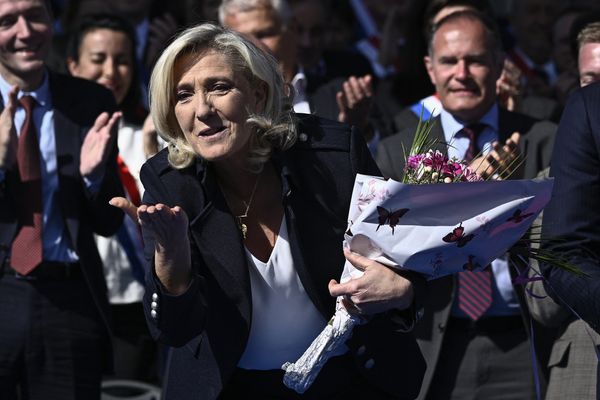If you could appoint one person, and one person only, with the task of rescuing your sport from a dramatic dip in popularity, there’s worse people you could choose than Michael Johnson.
With four Olympic gold medals and eight world titles over 200m and 400m, the American is one of track and field’s all-time greats. And he is, perhaps most importantly given his new venture, one of the most intelligent, articulate and engaging personalities in global sport.
Johnson has recognised, quite rightly, that athletics’ appeal has decreased drastically from its peak a few decades ago when it was one of the most popular, and most-watched, sports on the planet.
This status is now long gone with athletics maybe not quite in the doldrums but certainly struggling to grab much of the spotlight.
Johnson’s answer was to found Grand Slam Track, a new initiative which, he hopes, will revitalise athletics and grow the sport.
His plan is simple; four times in the space of 12 weeks, Grand Slam Track meets will take place.
There will be only track events, no field, and each athlete must race twice each weekend in, for example, the 100m and 200m or the 800m and 1500m.
The prize money on offer is exceptional, with a prize pot of tens of millions of dollars ensuring the winner of each event takes home $100,000. Even eighth place will win $10,000 which, although pennies in footballing terms, is a considerable sum in track and field.
Some of the sport’s biggest names are involved including Gabby Thomas, Fred Kerley and Sydney McLaughlin-Levrone, GB’s Dina Asher-Smith, Zharnel Hughes and Matt Hudson-Smith and from a Scottish perspective, there’s Josh Kerr and Neil Gourley.

On paper, it looks promising and indeed, the first Grand Slam Track meet, which began in Kingston, Jamaica on Friday and ends this evening, has gone well.
It’s well-presented, has produced some good racing and has showcased some of the very biggest names in the sport.
So far, so good, so could it be the sport’s saviour?
Well, be under no illusions, Grand Slam Track is far from perfect.
Its most obvious drawback is the omission of field events which has drawn severe criticism.
Johnson’s reply? That he can, initially at least, only save track, he can’t save track and field in one fell swoop.
Additionally, the absence of some of the biggest names on the track is a failing; Jakob Ingebrigtsen; Keely Hodgkinson; Noah Lyles; Femke Bol and others have opted not to sign up.
Their absence may, concedes Johnson, be down to both the obligation to compete at all four Grand Slam Track meets, plus the requirement to race twice at each meet with the second distance, in some cases at least, enough out of their comfort zone that it acts as a serious deterrent.
But you can’t have it all ways.
Few athletes would argue that their sport is anything other than struggling, particularly in comparison to its hey-day a few decades ago when track and field athletes were truly household names.
And so, while athletics may never return to quite the level of success it enjoyed a few years ago, there’s no reason why the decline cannot be halted and indeed, the sport manage to jump up at least a few notches in terms of global popularity.
Where athletics has a real advantage over all other so-called “minority” sports is that there’s a level of interest of which no other Olympic sport can boast.

At the Olympic Games, track and field remains the blue-riband sport.
Tens of millions of people watched the men’s Olympic 100m final at Paris 2024 alone. And across the Olympic programme, track and field as a whole is regularly is one of the biggest draws.
Yet, as Johnson says, public interest in athletics falls off a cliff in the aftermath of the Olympic Games.
The first question that must be answered is why does this happen and the second is how can it be prevented?
The primary failing of athletics is its inability to ensure the biggest names race head-to-head regularly.
All too often, the top athletes in the world race each other directly only at the major championships plus, if you’re lucky, a few more times per season.
This is not enough, and Johnson knows it.
Also what’s either missing entirely, or not given anything like the platform it needs, is the personalities of the athletes.
What makes for the greatest of rivalries, which are the ones that keep audiences engaged as well as attracting new ones, are true rivalries.
The perfect example is the Josh Kerr-Jakob Ingebrigtsen rivalry that built to a crescendo at the Paris Olympics last year.
For over a year leading up to the Olympic Games, Kerr and Ingebrigtsen developed a genuine dislike for each other.
And it couldn’t have been better for the sport because it ensured the men’s 1500m final at Paris 2024 was the most highly-anticipated track and field final of the entire Olympic athletics’ programme.
There is not enough of that in track and field and Johnson, to his credit, has realised this, acknowledging that merely having fast runners is not enough for a sport to thrive.
There is, of course, no magic bullet that will “fix” athletics.
And it remains to be seen if Grand Slam Track ultimately has any impact at all.
My guess is it will, at least in the short term and as a result of having Johnson at the helm, boost athletics’ popularity.
I hope so, because it’s a truly great sport that a worryingly high number of people aren’t watching anymore.
If athletics can become a true global force once again, the entire world of sport will be all the better for it.







